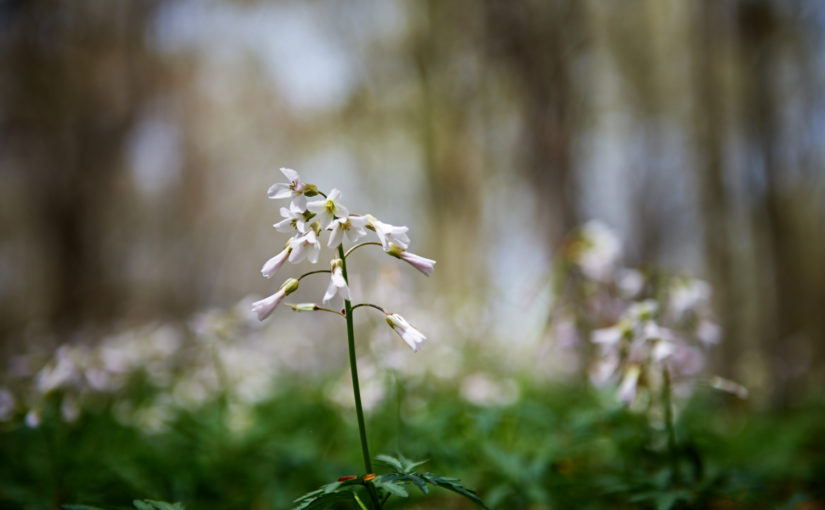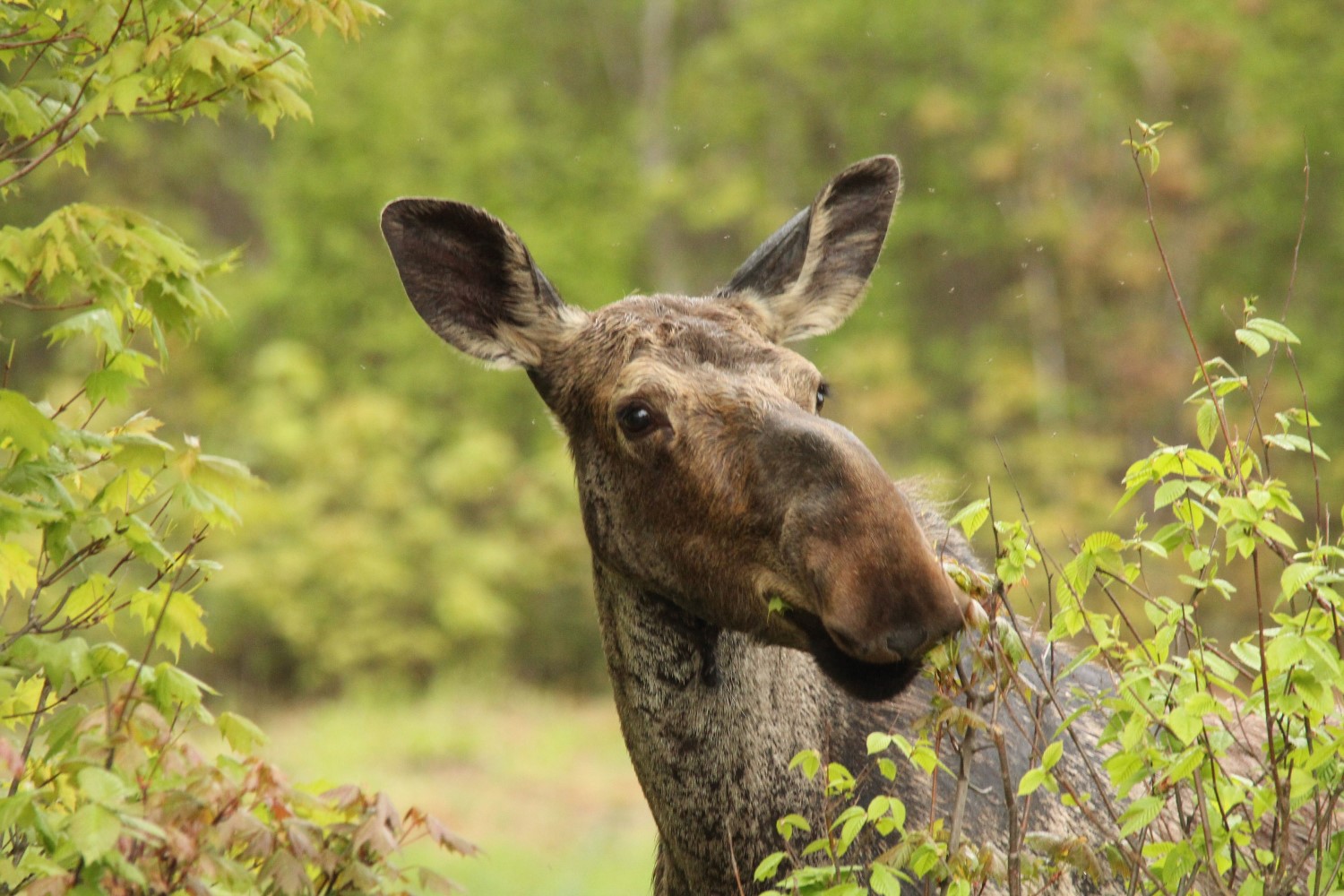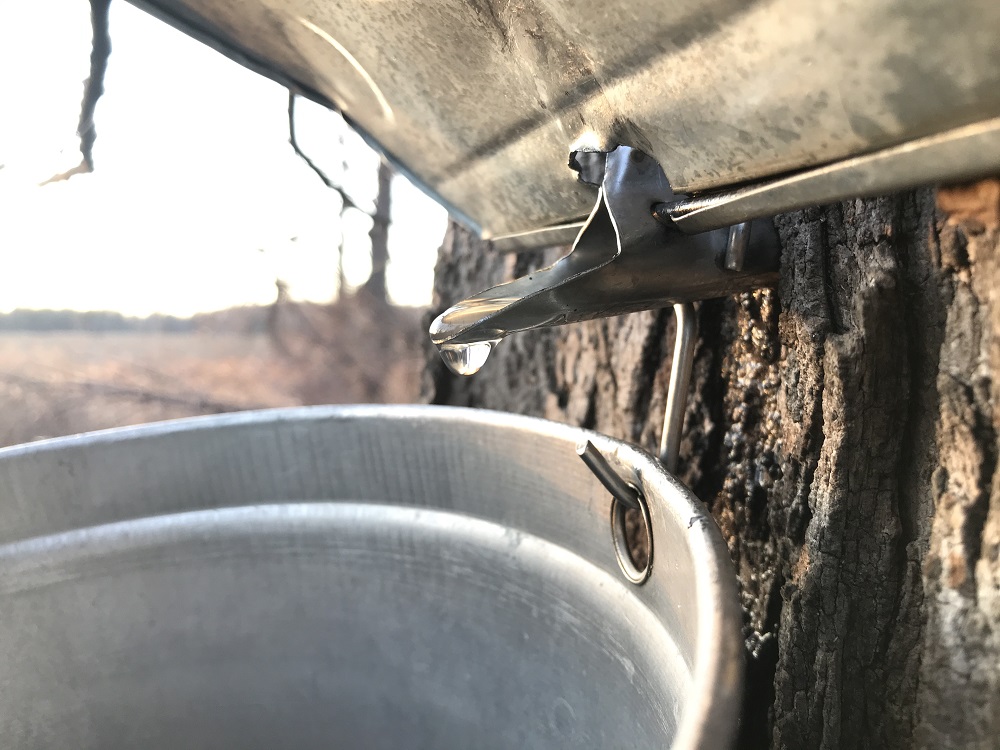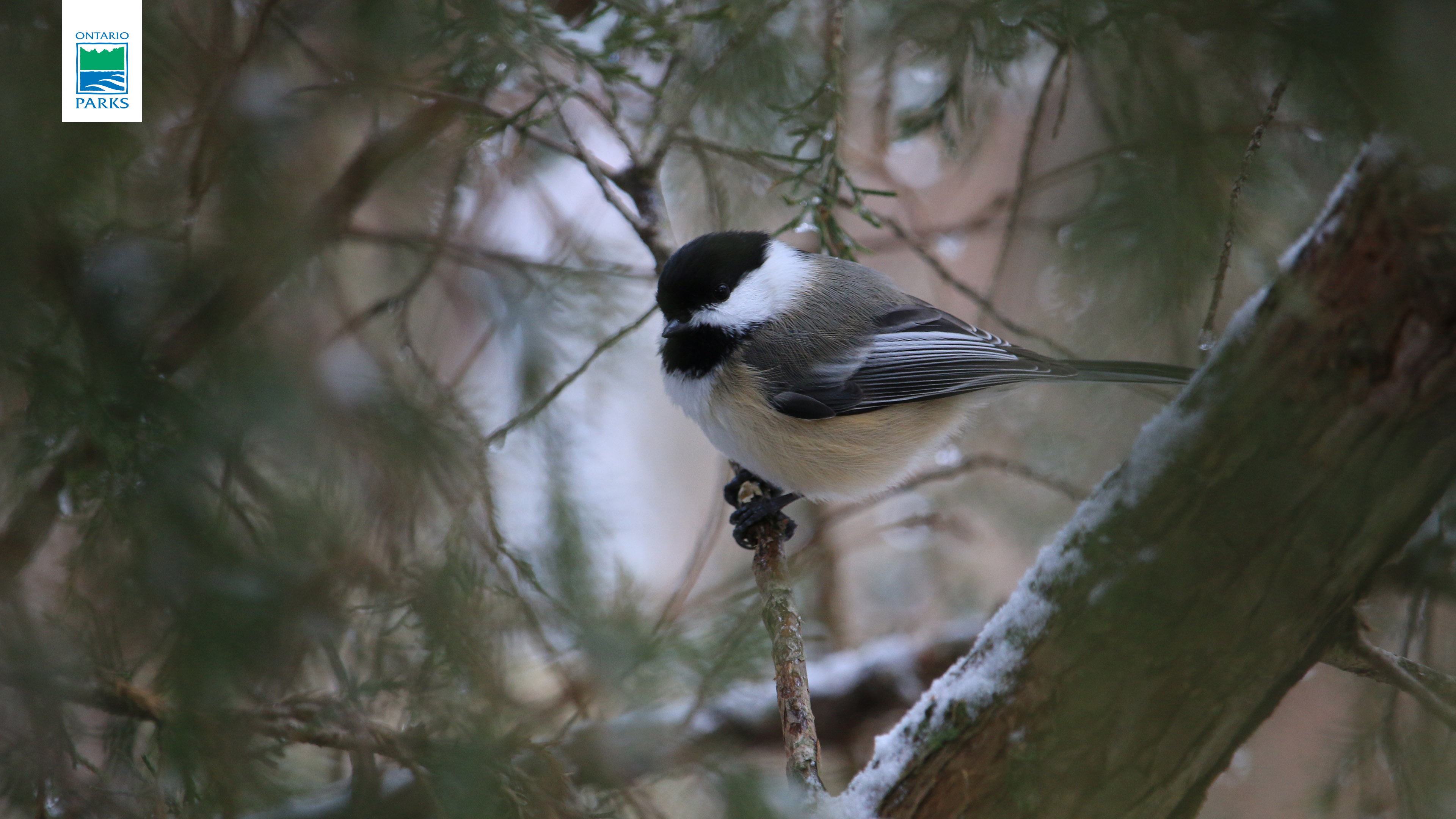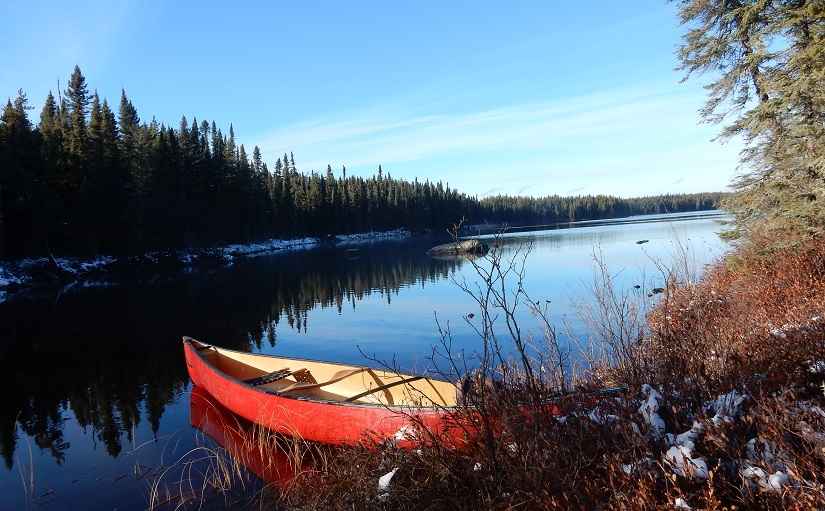Spring has sprung at Ontario Parks!
The sun is out, the birds are chirping, and the days of snow and sleet are (hopefully!) behind us. As the snow melts, enjoy the sensory delights of spring in our provincial parks as we see and hear signs of warm weather to come.
You know it’s spring in Ontario Parks when…
You see moose
Moose are salt-depleted by the end of winter. Early spring runoff and salt from winter highway maintenance form mineral pools in roadside ditches, which moose love to feed in.
One of the best parks to spy moose in early spring is Algonquin Provincial Park along Highway 60, however please ensure you drive with care and don’t stop on the highway to view the moose.
You hear owls
By mid-March, Great Horned Owls have hatched their young, and Eastern Screech Owls are breeding.
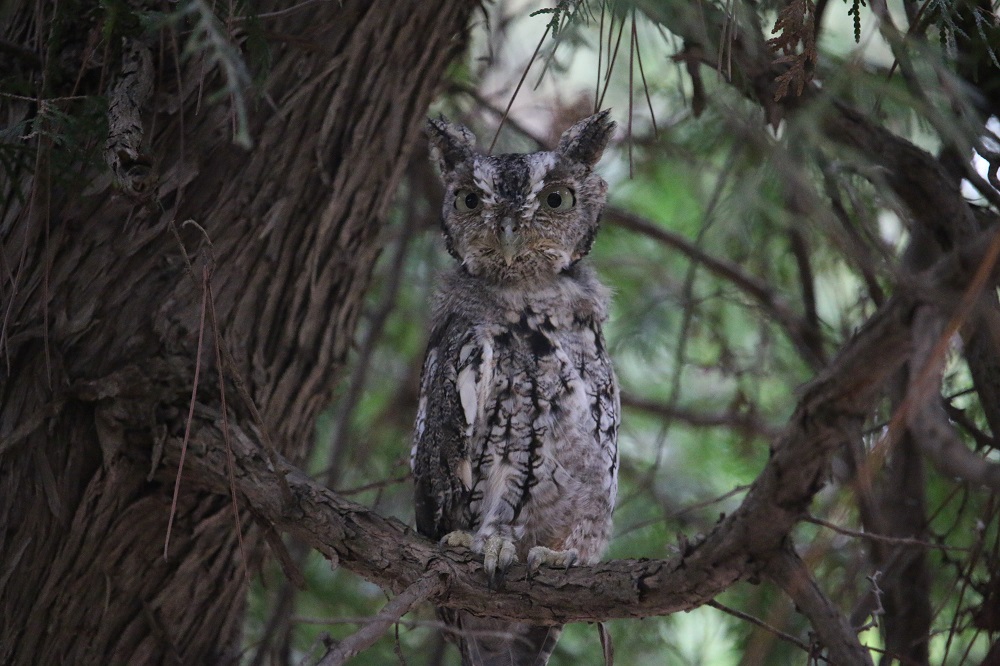
The call of the great horned may be familiar to anyone who has camped in Ontario Parks – ho hoo hoo-hoo. The eastern screech call is different – more like a high-pitched rolling of the R’s with the tip of your tongue.
You see Mourning Cloak Butterflies
Even before the snow melts, large velvety black butterflies with pale yellow wing margins race through Ontario forests on sunny days. These are known as Mourning Cloak Butterflies.
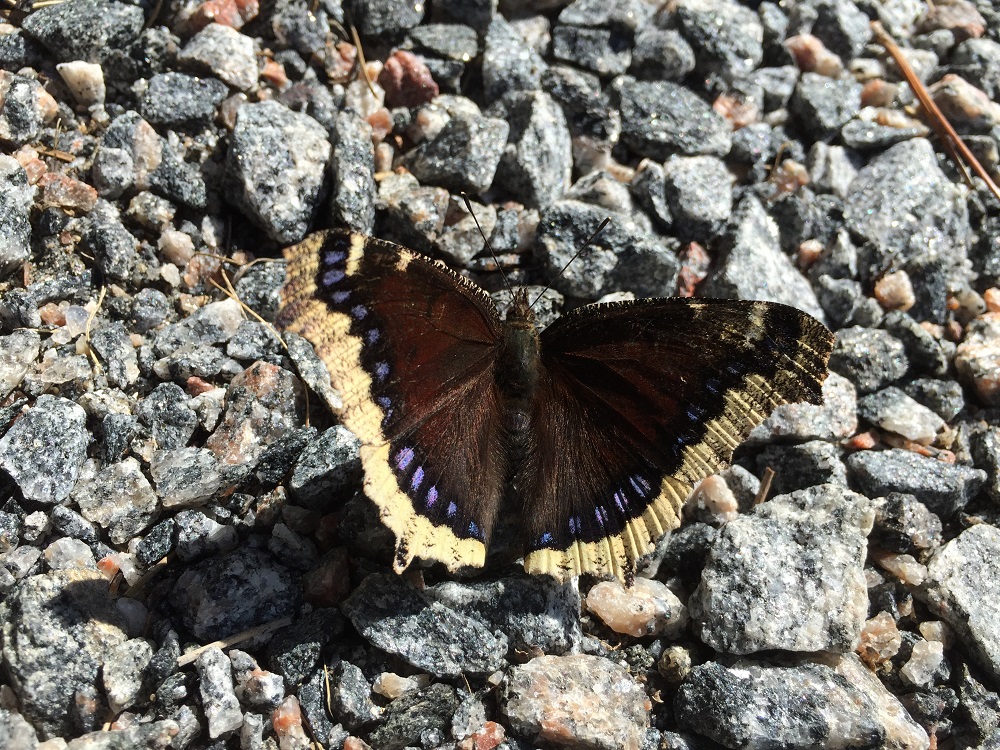
The butterflies overwinter as adults inside dead trees. In spring, the butterflies emerge on mild days in search of sap to drink.
You spot Spring Tails
Spring Tails are wee insects filled with a natural anti-freeze that give them a strange, sticky belly button, and an ability to catapult their bodies away from danger.
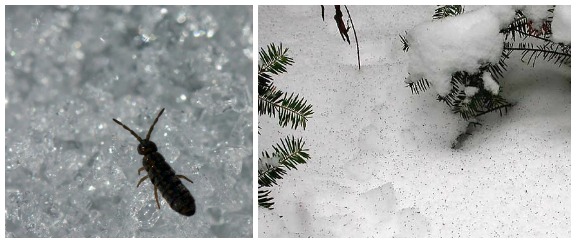
In early spring they swarm and look like black powder on patches of snow and downed wood.
You hear spring peepers
Listen for spring peepers on warmer April evenings.
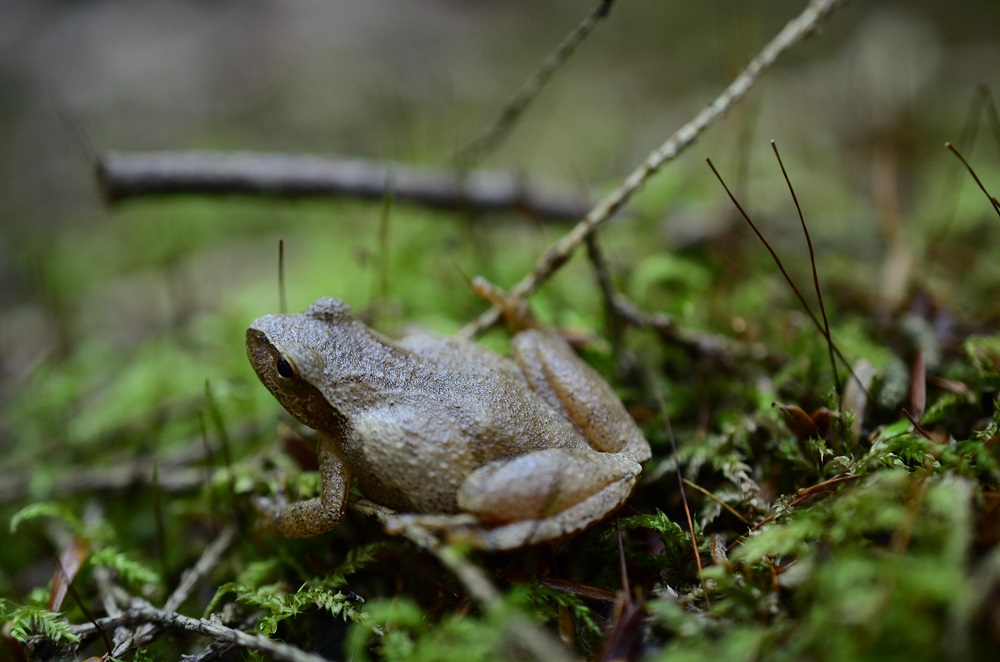
These tiny frogs are the only ones in Ontario that have a darker X -shaped marking on their backs.
You see sap flow
Sugar maple trees get their name from the sweet sap they produce.
You hear chickadees sing
Singing is a sure sign that Black-capped Chickadees are starting to establish territories and pair up for their breeding season in early to mid-April (conditions permitting). This spring call is not the familiar chicka-dee-dee song.
Listen to chickadee songs here.
Did you know a Black-capped Chickadee was featured in this month’s digital download? Click here to download our FREE wallpaper for your favourite device!
You see the trees bud

You can’t help but notice new tree buds on a spring hike. Buds get big and fat before opening into leaves.
Ash buds look like chocolate chips! Yellow birches have pretty two-toned buds, beech buds are long and elegant, and bitter hickory buds are noted for their distinctive sulfur colour.
You see the tundra swans returning
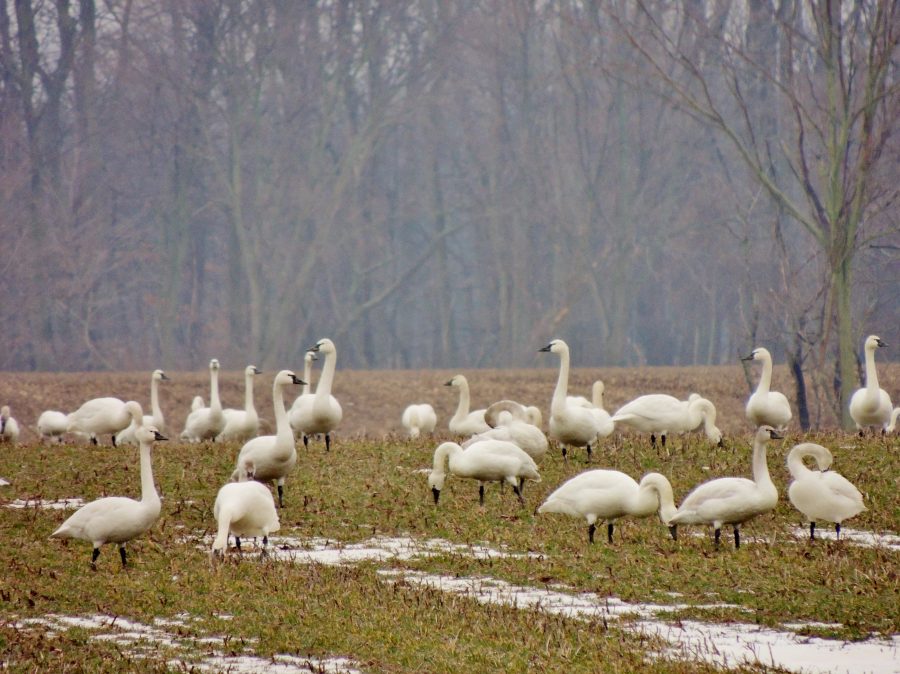
Migrating tundra swans make stops in provincial parks along Lakes Huron, Erie and Ontario. One of the most impressive sights is Thedford Bog beside Pinery Provincial Park on Lake Huron.
Every March, 80,000 tundra swans rest here enroute to their Arctic breeding grounds.
You see ice-out adventurers
Experienced paddlers on an ice-out adventure are an early spring tradition in Ontario Parks.
While water safety is paramount, especially in spring, higher water levels allow experienced paddlers to explore park areas not accessible by canoe or kayak in summer months.
Countless outfitters across Ontario add spring ice out alerts to their websites so paddlers know when to head out.
